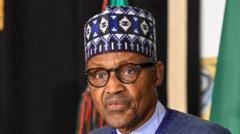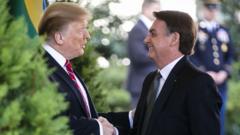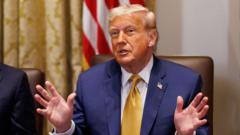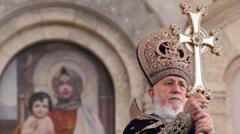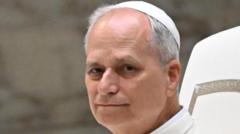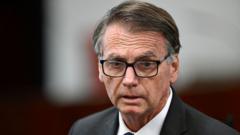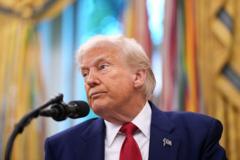A diverse range of headlines and imagery reflects the excitement over the election of Pope Leo XIV in an unprecedented moment for the Catholic Church.
Pope Leo XIV: A Historic Election Through Global Perspectives

Pope Leo XIV: A Historic Election Through Global Perspectives
Newspapers Worldwide Celebrate the First North American Pope
Newspapers around the globe buzzed with excitement on Friday, celebrating the historic election of Robert Francis Prevost as the first North American pope, who will be known as Pope Leo XIV. Coverage across various print media showcased clever headlines, vibrant photographs, and acknowledgments of his unique heritage.
The phrase “Habemus papam,” meaning “We have a pope,” appeared prominently, echoing tradition amidst modernity, particularly in English-speaking publications that rarely feature Latin. Cardinal Dominique Mamberti from France excitedly announced the pope to the public from the St. Peter’s Basilica balcony, sparking cheers from the crowd below.
Most newspapers ran powerful images capturing Pope Leo XIV as he addressed the world for the first time, joyfully waving to the gathered masses. L’Osservatore Romano, the official Vatican publication, prominently featured a papal portrait with the headline announcing his full name and newly adopted title.
International media embraced Pope Leo XIV's American beginnings, with the Irish Daily Mirror proclaiming “Let U.S. Pray,” while the Swiss newspaper Le Temps opted for the classic “HabemUS Papam.” In the UK, The Sun made waves with the headline “God Bless American,” highlighting the pope’s northern roots.
Chicago papers enthusiastically honored their native son. The Chicago Tribune labeled him “Chicago’s pope,” while The Chicago Sun-Times cheekily stated “DA POPE!” playing off local sports culture. The Philadelphia Inquirer took pride in highlighting his ties to the region, mentioning his alma mater, Villanova University.
In Peru, Pope Leo XIV was embraced as an honorary citizen due to his extensive missionary work and role as a bishop there. El Mercurio in Chile took a diplomatic stance with a dual-nationality reference, recognizing both Peruvian and American identities. Similar sentiments surged through the headlines of various newspapers, reflecting pride over their connections to the new papacy.
While some outlets opted for a heartfelt approach by emphasizing his papal name over nationality, like Diário de Notícias and Libération with simply “Leo,” others highlighted his first message to the faithful with headlines quoting, “‘Peace be with you.’” This election marks not only a pivotal moment for the Catholic Church but also a blend of diverse cultures and legacies represented in the global response.
The phrase “Habemus papam,” meaning “We have a pope,” appeared prominently, echoing tradition amidst modernity, particularly in English-speaking publications that rarely feature Latin. Cardinal Dominique Mamberti from France excitedly announced the pope to the public from the St. Peter’s Basilica balcony, sparking cheers from the crowd below.
Most newspapers ran powerful images capturing Pope Leo XIV as he addressed the world for the first time, joyfully waving to the gathered masses. L’Osservatore Romano, the official Vatican publication, prominently featured a papal portrait with the headline announcing his full name and newly adopted title.
International media embraced Pope Leo XIV's American beginnings, with the Irish Daily Mirror proclaiming “Let U.S. Pray,” while the Swiss newspaper Le Temps opted for the classic “HabemUS Papam.” In the UK, The Sun made waves with the headline “God Bless American,” highlighting the pope’s northern roots.
Chicago papers enthusiastically honored their native son. The Chicago Tribune labeled him “Chicago’s pope,” while The Chicago Sun-Times cheekily stated “DA POPE!” playing off local sports culture. The Philadelphia Inquirer took pride in highlighting his ties to the region, mentioning his alma mater, Villanova University.
In Peru, Pope Leo XIV was embraced as an honorary citizen due to his extensive missionary work and role as a bishop there. El Mercurio in Chile took a diplomatic stance with a dual-nationality reference, recognizing both Peruvian and American identities. Similar sentiments surged through the headlines of various newspapers, reflecting pride over their connections to the new papacy.
While some outlets opted for a heartfelt approach by emphasizing his papal name over nationality, like Diário de Notícias and Libération with simply “Leo,” others highlighted his first message to the faithful with headlines quoting, “‘Peace be with you.’” This election marks not only a pivotal moment for the Catholic Church but also a blend of diverse cultures and legacies represented in the global response.


